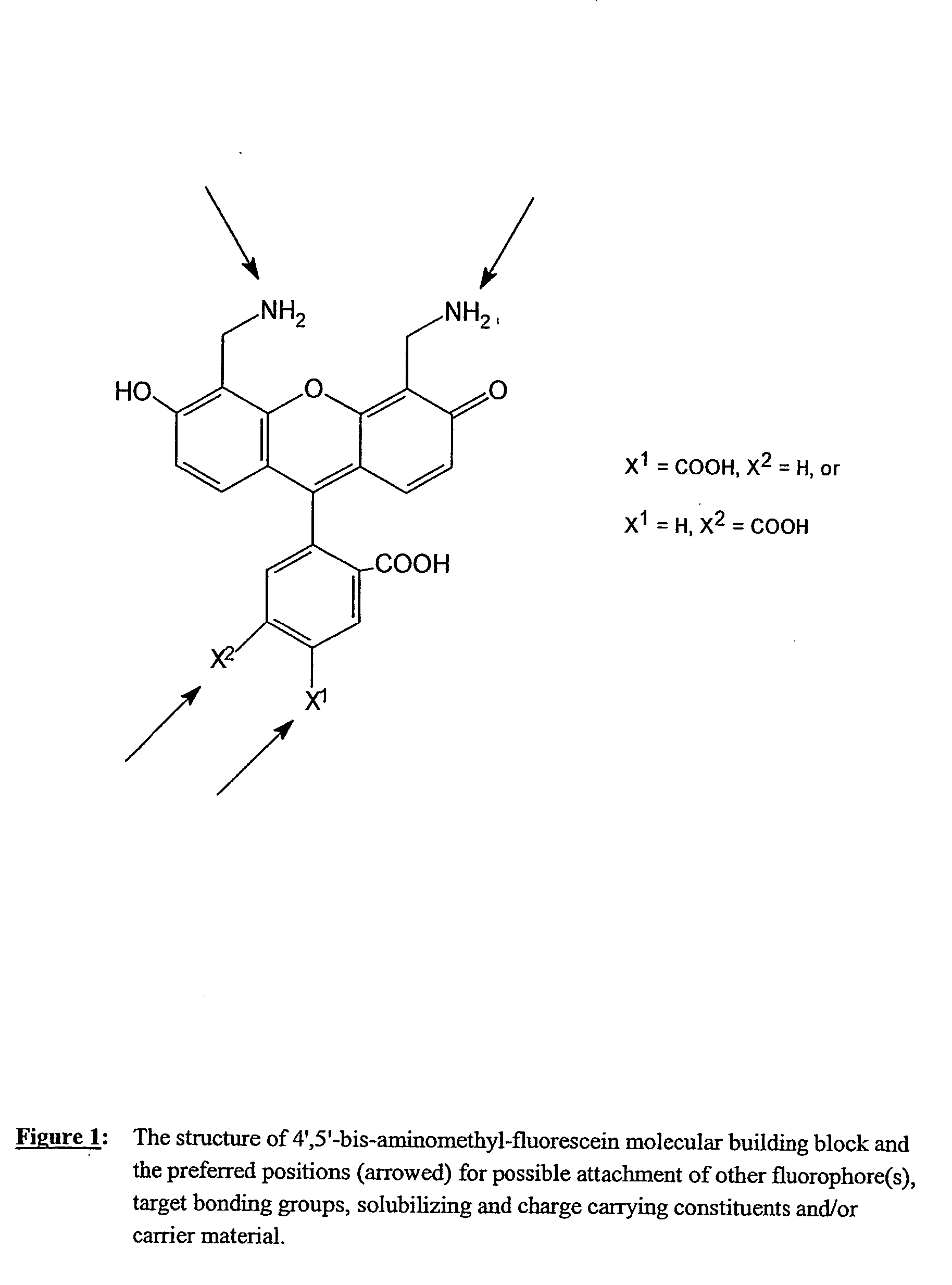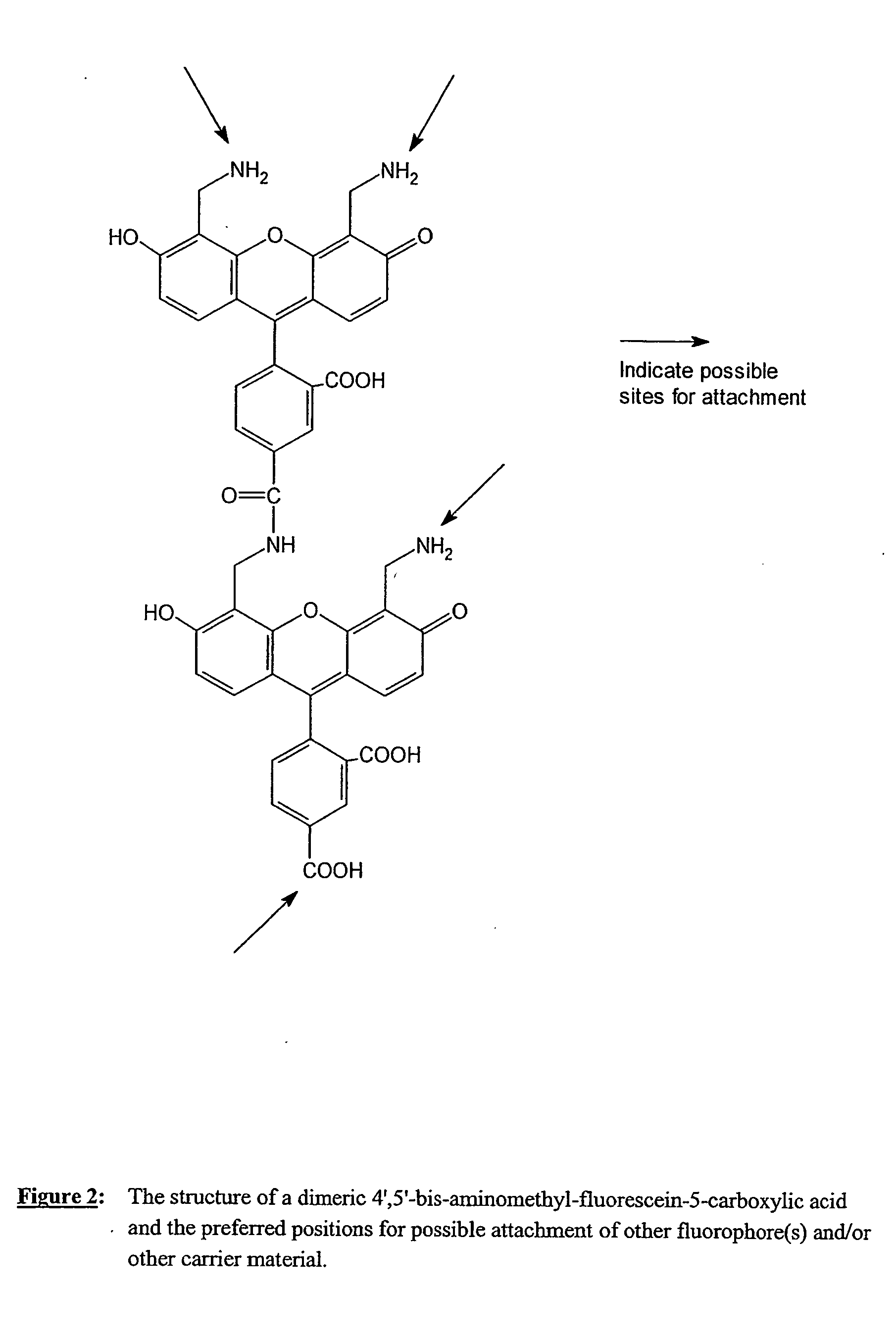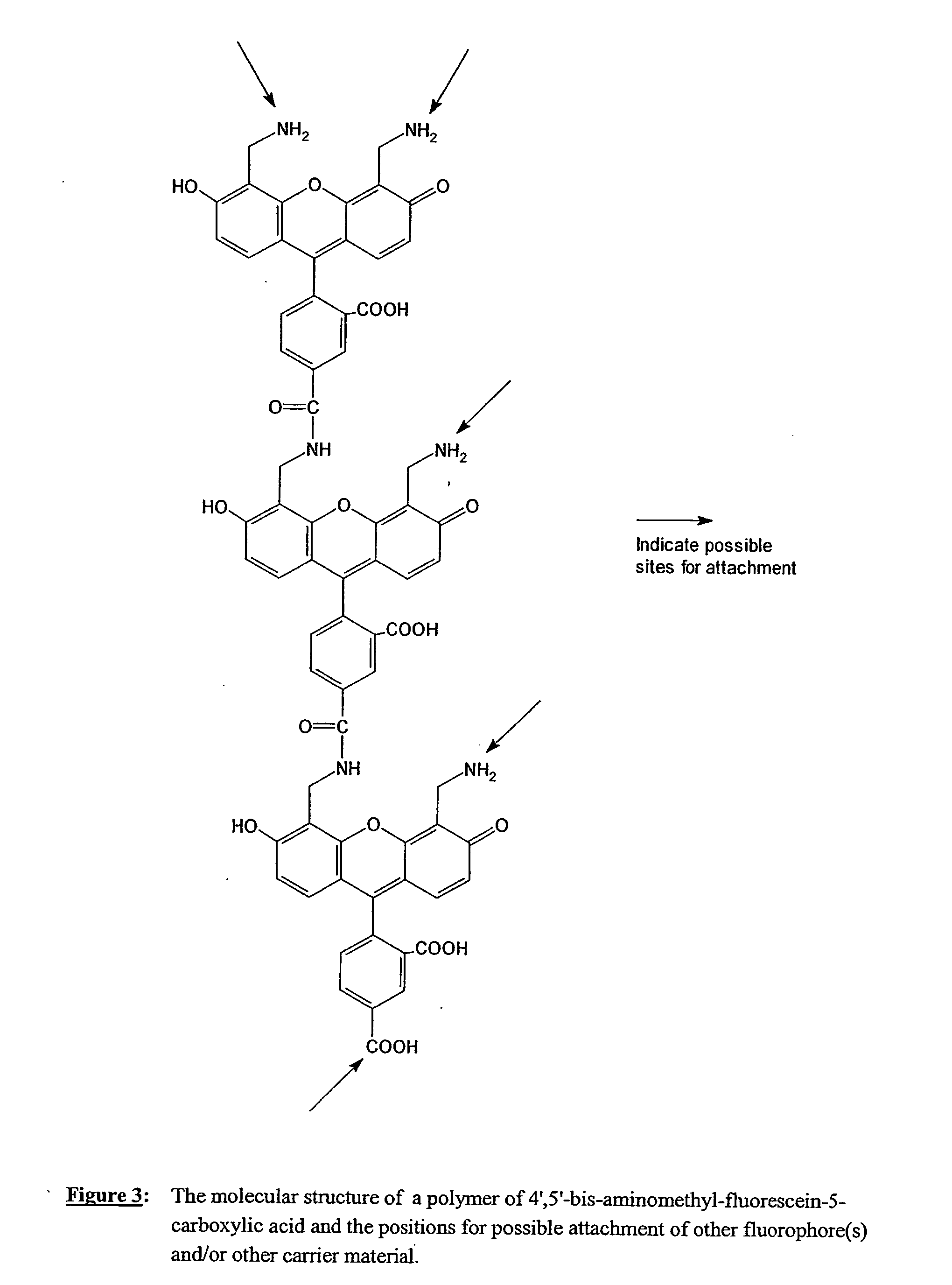Fluorescent labeling reagents with multiple donors and acceptors
a labeling reagent and fluorescent dye technology, applied in the field of fluorescent dyes, can solve the problems of lowering the efficiency of energy transfer, assembly cannot be used as a labeling reagent for much more general use, and no conclusion has been made about whether two consecutive energy transfer steps are more efficient than direct ones
- Summary
- Abstract
- Description
- Claims
- Application Information
AI Technical Summary
Benefits of technology
Problems solved by technology
Method used
Image
Examples
examples
1. Synthesis of 4′,5′-bis-Aminomethyl-fluorescein
1.1 4′,5′-bis-(2-Chloroacetamido)-aminomethyl-fluorescein
[0068] Fluorescein (3.3 grams) and 2-chloro-n-(hydroxymethyl)-acetamide (5.0 grams) were dissolved in 20 ml of concentrated sulfuric acid. The dark brown solution was stirred at room temperature for two hours. At such time, ESMS+ indicated that there was no starting fluorescein left. The product was poured into 200 grams of ice and water and the precipitate was filtered, washed with water, followed by ether and air-dried. NMR of the material, thus obtained, indicated that it was the desired product.
1.2 Hydrolysis of 4′,5′-bis-(2-Chloroacetamido)-aminomethyl-fluorescein
[0069] The product from the above reaction was suspended in 40 ml of concentrated hydrochloric acid and heated to reflux for 30 minutes. A clear solution was obtained. The product was evaporated to dryness and the residue recrystalized from methanol / dichloromethane to give the desired product, 4′,5′-bis-amin...
PUM
| Property | Measurement | Unit |
|---|---|---|
| wavelength | aaaaa | aaaaa |
| wavelength | aaaaa | aaaaa |
| wavelength | aaaaa | aaaaa |
Abstract
Description
Claims
Application Information
 Login to View More
Login to View More - R&D
- Intellectual Property
- Life Sciences
- Materials
- Tech Scout
- Unparalleled Data Quality
- Higher Quality Content
- 60% Fewer Hallucinations
Browse by: Latest US Patents, China's latest patents, Technical Efficacy Thesaurus, Application Domain, Technology Topic, Popular Technical Reports.
© 2025 PatSnap. All rights reserved.Legal|Privacy policy|Modern Slavery Act Transparency Statement|Sitemap|About US| Contact US: help@patsnap.com



